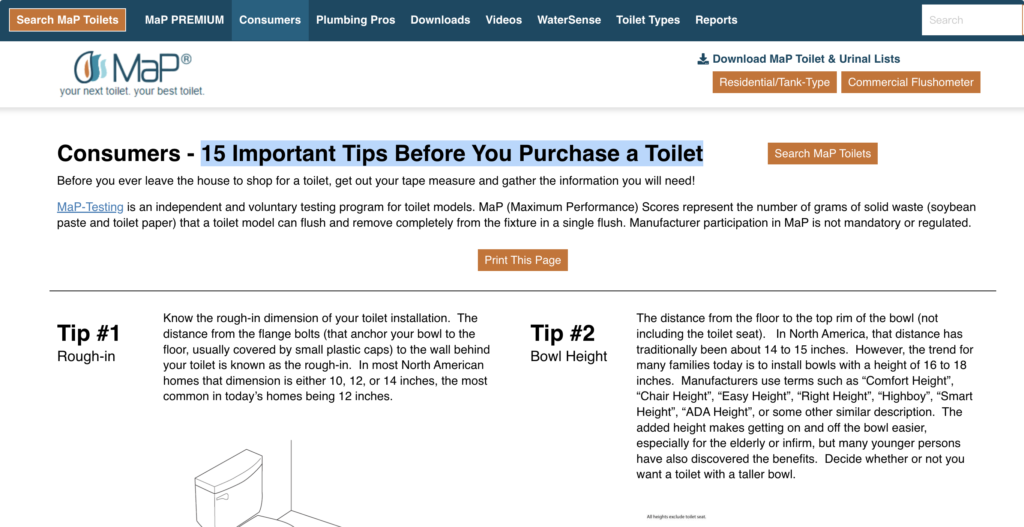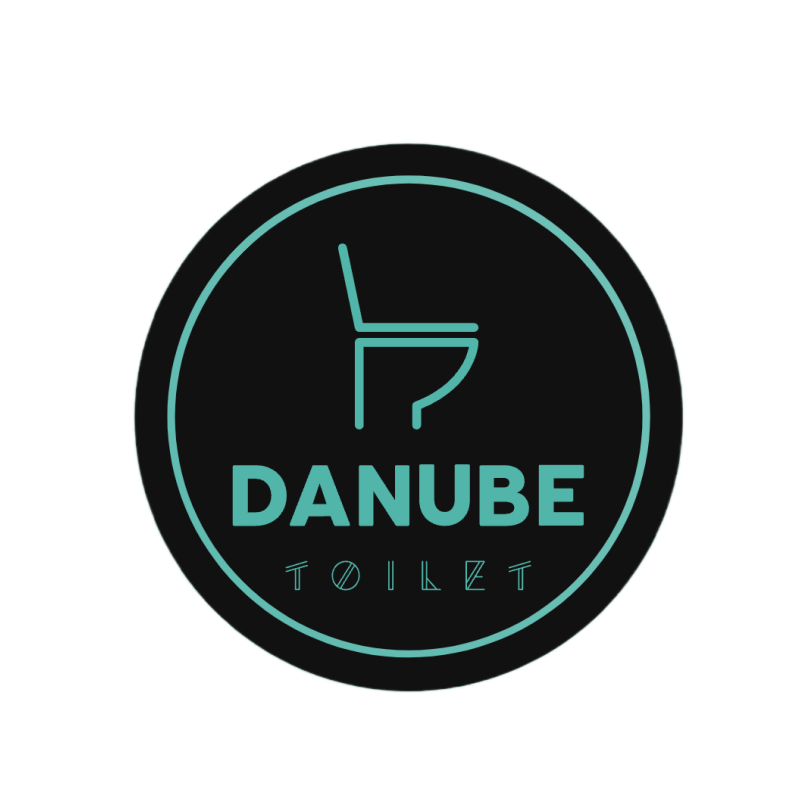In the global sanitary ware industry, flush performance is no longer just a matter of user comfort—it’s a critical technical specification for architects, procurement managers, and sanitary product developers.
At the center of flush performance standards lies a globally recognized benchmark: MaP Testing.
But what exactly is MaP testing in toilets? How does it work, what are its thresholds, and why should international buyers—especially those managing hospitality, real estate, or infrastructure projects—care about it?
Let’s explore this professional-grade standard in depth.
What Is MaP Testing?
MaP stands for Maximum Performance Testing—a standardized, third-party laboratory test that measures a toilet’s flushing efficiency by quantifying the maximum amount of solid waste a toilet can remove in a single flush.
Developed jointly by industry professionals and water-efficiency advocates, MaP Testing has become a trusted benchmark for toilet performance in North America and increasingly in other regions, especially where low water consumption and reliable sanitation are equally vital.
How Does MaP Testing Work?
MaP tests simulate realistic solid waste by using a specific formula: soybean paste mixed with toilet paper to mimic human waste in density and behavior.
The testing process includes:
- Incrementally increasing the amount of simulated waste (starting from 50g up to 1000g+)
- Repeating the flush cycle under standard pressure and conditions
- Recording the maximum amount of material successfully cleared in one flush without any blockage or leftover residue
Toilets that clear at least 250g are considered minimally acceptable, while those achieving 1000g or more are categorized as high-performance units.
Why Does MaP Rating Matter?
In a professional context—whether you’re designing a hotel bathroom layout in Dubai or selecting fixtures for a large-scale residential tower in Canada—MaP ratings serve as a predictive performance indicator.
Here’s why flush performance, as measured by MaP, matters:
- Reduces clogging in high-traffic restrooms
- Improves long-term maintenance efficiency
- Enhances user satisfaction
- Supports water-saving initiatives without compromising functionality
- Provides quantifiable assurance to architects, developers, and procurement teams
In short, a high MaP rating means a toilet is both powerful and efficient—and that’s essential when failure is not an option.
MaP Ratings Explained
To simplify your decision-making process, here’s a breakdown of the different MaP score ranges and what they signify in real-world toilet performance.
| MaP Score Range | Waste Removed (grams) | Water Use per Flush | Suitable Applications | Performance Tier |
|---|---|---|---|---|
| 0 – 249 | Poor | Often >6.0 liters | Outdated products | ❌ Not recommended |
| 250 – 499 | Acceptable | 4.8 – 6.0 liters | Budget housing, retrofits | ⚠️ Entry-level |
| 500 – 799 | Good | 3.8 – 5.0 liters | Standard residential | ✅ Reliable performance |
| 800 – 1000 | Excellent | 3.0 – 4.8 liters | Hotels, offices, multi-family homes | 🌟 High performance |
| 1000+ | Outstanding | ≤3.0 liters | Premium homes, LEED-certified sites | 🏆 Best-in-class |
Is MaP Testing Mandatory?
While MaP Testing is not mandatory by law, many municipalities, especially in the U.S. and Canada, require toilets to meet specific performance criteria that are often aligned with or influenced by MaP standards.

In procurement RFPs and architectural specifications, it’s increasingly common to see clauses such as:
“Toilets must be MaP-rated to flush at least 800g using no more than 4.8L per flush.”
For global buyers, especially those working with green building certifications like LEED, WELL, or BREEAM, using MaP-rated products can support compliance and boost project eligibility.
Common Misconceptions About MaP Testing
1. “More water equals better flushing.”
Not necessarily. Modern engineering allows toilets to flush up to 1000g of material using just 3 liters of water or less—without sacrificing performance.
2. “Wall-hung toilets perform worse than floor-mounted models.”
False. Flush performance is tied to hydraulics, bowl geometry, and trapway design, not installation type.
3. “MaP scores are only for North America.”
While the test originated in the U.S., MaP ratings are now used by global buyers, OEM partners, and international hotel groups as part of their quality checks.
15 Important Tips Before You Purchase a Toilet

How to Choose the Right MaP-Rated Toilet for Your Project
When evaluating toilets for commercial or residential projects, consider the following factors alongside MaP scores:
- Water Efficiency: Look for dual-flush or high-efficiency systems that still achieve 800g+ performance.
- Design Compatibility: Does the model support your bathroom layout (floor-mount, wall-hung, skirted)?
- Durability & Glaze Quality: Superior ceramic coating prevents stains and supports cleaner flushes.
- Certifications: Verify if the toilet is certified by WaterSense, CE, or other relevant authorities.
- OEM Customization: If working with a manufacturer, confirm their ability to support MaP-compliant design modifications.
FAQs – People Also Ask
❓ What is a good MaP rating for a toilet?
800g or above is considered excellent. For high-demand use or luxury projects, aim for 1000g+.
❓ Does MaP rating affect water usage?
Yes, indirectly. Toilets with higher MaP ratings tend to be more efficient by design, meaning they achieve strong flush power even with less water.
❓ How is MaP testing different from CE or WaterSense?
MaP tests performance, while CE and WaterSense certify safety and water-saving features. Together, they offer a complete view of a toilet’s value.
❓ Can smart toilets be MaP-rated?
Absolutely. Many intelligent toilets with integrated bidet functions also undergo MaP testing to verify their core flush performance.
Final Thoughts: Performance You Can Measure
In today’s performance-driven building environment, relying solely on visual design or marketing claims is no longer sufficient. MaP Testing offers objective, measurable proof that a toilet will function as promised.
Whether you’re a product manager at a sanitary brand, a hotel supply chain leader, or an infrastructure project buyer, MaP ratings provide the peace of mind that your chosen products deliver—in water use, waste clearance, and long-term maintenance efficiency.
Looking for a MaP-Compliant Sanitary Ware Manufacturer?
Danube is a leading sanitary ware factory based in China, specializing in ceramic toilets, basins, bathroom cabinets, smart toilets, and intelligent mirrors. We support OEM and ODM orders for global sanitary ware brands and building contractors—offering custom-engineered solutions that meet MaP performance standards and international quality benchmarks.
